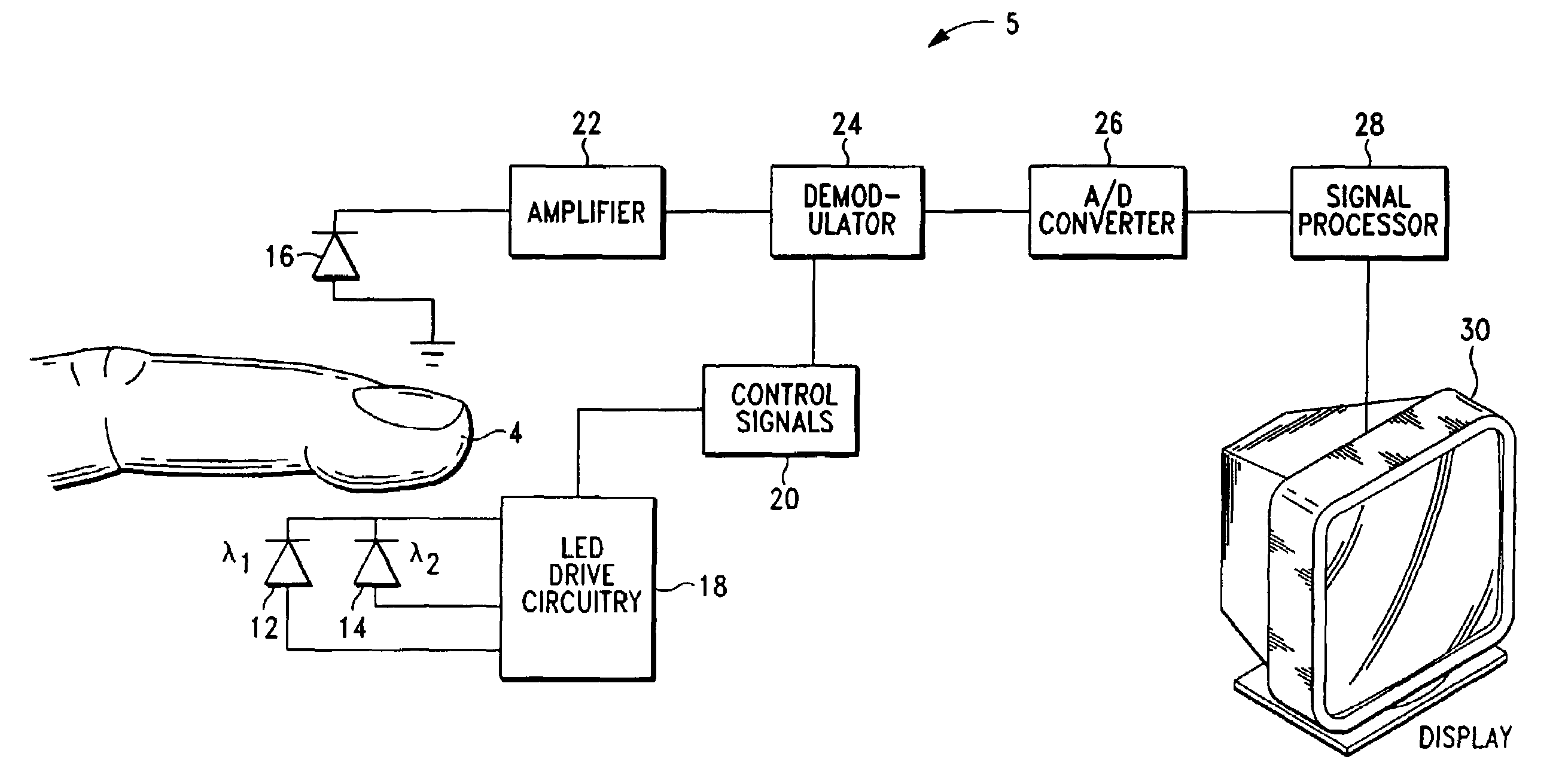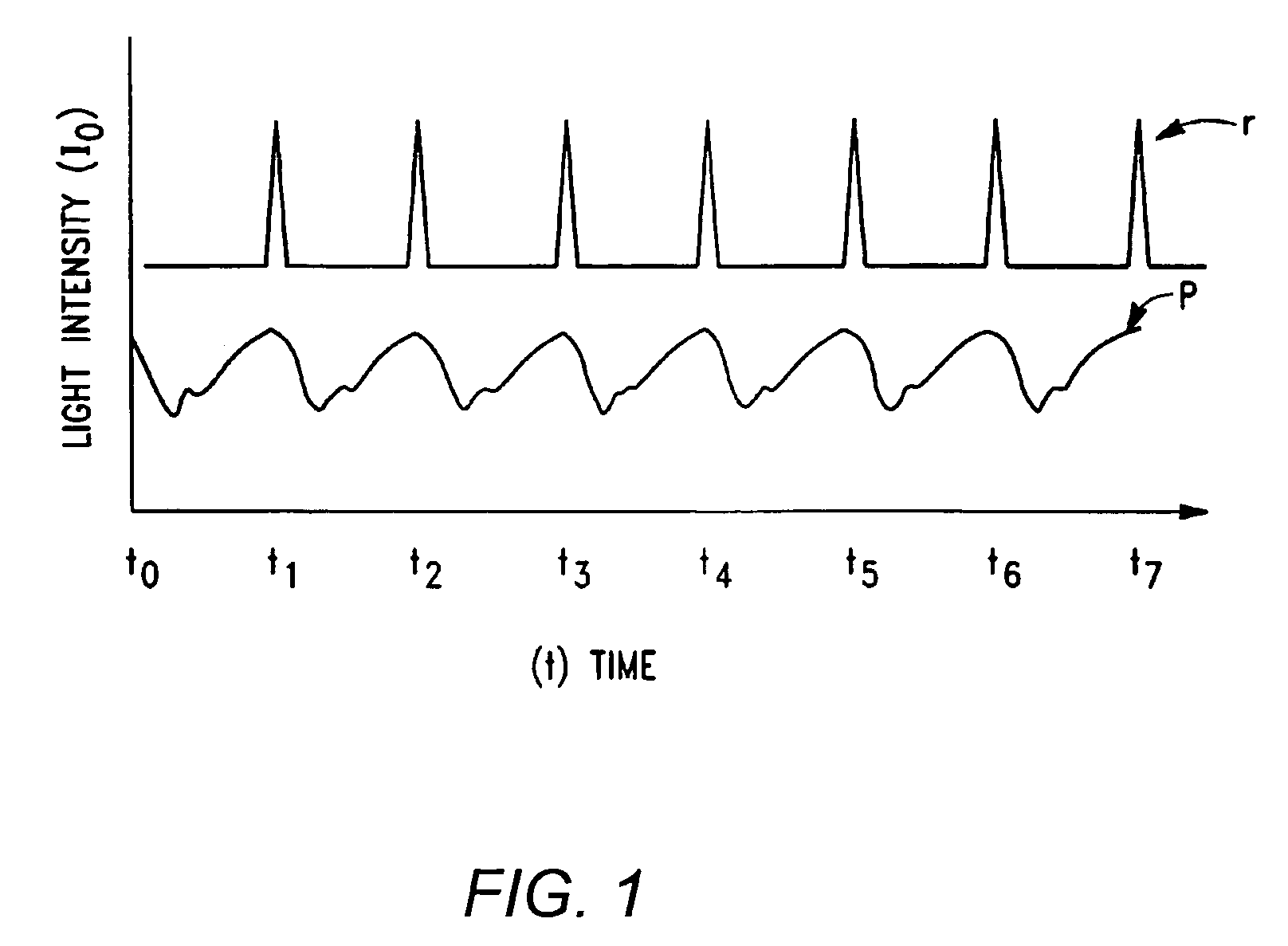Method and apparatus for processing signals reflecting physiological characteristics
a physiological characteristic and signal processing technology, applied in the field of signal processing, can solve the problems of plethysmograph signal (and optically derived pulse rate) being subject to irregular variations, interfere with detection, and conventionally quite difficult to characterize and remove, and achieve the effect of minimizing undesirable signal components
- Summary
- Abstract
- Description
- Claims
- Application Information
AI Technical Summary
Benefits of technology
Problems solved by technology
Method used
Image
Examples
example 1
[0098]Desaturation studies of seven human subjects were performed and 53 independent data points corresponding to single pulses were collected. Values for residual factor f were derived using the steps described above and reference oxygen saturation was measured independently by a CO-oximeter instrument. As shown in FIG. 11, there is a close correlation between residual factor f and oxygen saturation. Correspondingly, residual factor f can serve as a basis for calibrating pulse oximeters in place of conventional ratios of logarithms.
example 2
[0099]A study comparing oximetry determinations using data corrected as described above to reference oxygen saturation was performed with 8 adult volunteers. For the study, a catheter was placed into a radial artery of each subject. A Nellcor N-200 pulse oximeter was used as a reference device, and also for clinically monitoring the subject. Each subject was given varying inspired concentrations of oxygen in order to produce arterial hemoglobin oxygen saturations in the approximate range of 70–100%. Blood samples were drawn from the arterial catheter simultaneously with readings of oxygen saturation, and immediately analyzed. Data were collected of both the waveform being analyzed, as well as computed intermediate steps. The arterial blood sample was analyzed on two separate blood-gas analyzers by Radiometer. The functional saturation of hemoglobin was computed as oxyhemoglobin / (total hemoglobin). That is, all non-oxyhemoglobin species were included in total hemoglobin. At all satur...
PUM
 Login to View More
Login to View More Abstract
Description
Claims
Application Information
 Login to View More
Login to View More - R&D
- Intellectual Property
- Life Sciences
- Materials
- Tech Scout
- Unparalleled Data Quality
- Higher Quality Content
- 60% Fewer Hallucinations
Browse by: Latest US Patents, China's latest patents, Technical Efficacy Thesaurus, Application Domain, Technology Topic, Popular Technical Reports.
© 2025 PatSnap. All rights reserved.Legal|Privacy policy|Modern Slavery Act Transparency Statement|Sitemap|About US| Contact US: help@patsnap.com



